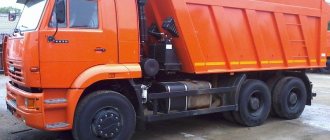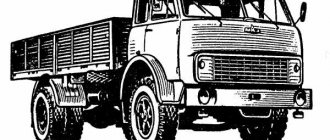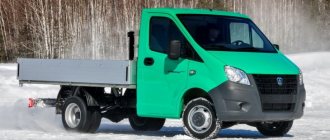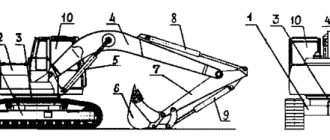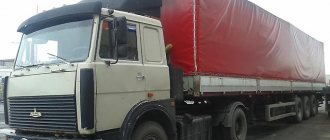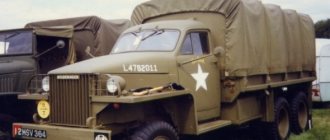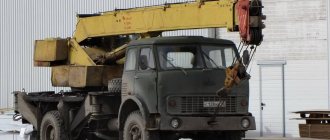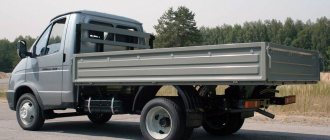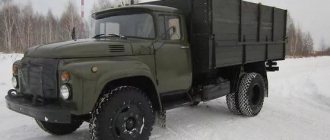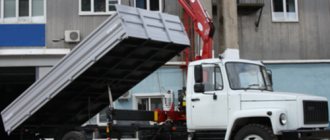P. Aleshin
The cross-country ability of this truck, which has been in production for over 30 years, can still be called outstanding. The path to its creation was long and difficult, but everyone who worked behind the wheel of these all-terrain vehicles remembers them with kind words. Numerous versions of the ZIL-157 model could be found in the Far North, and on construction sites in Siberia, and on pipeline laying in Central Asia, and, of course, in the armies of many countries around the world. Undoubtedly, this was one of the worthy domestic developments, and it deserves to be remembered.
At the end of the 1930s, when the inevitability of World War II was beyond doubt, designers of European factories producing army vehicles were racking their brains over how to increase the cross-country ability of vehicles. Their efforts did not go unnoticed in the USSR, because serious attention was paid to issues of increasing defense capability. The greatest successes in this matter were achieved at the Gorky Automobile Plant, where constant velocity joints were first introduced into production, turning the front axle of a car into a drive axle. The merit of the design team under the leadership of Andrei Aleksandrovich Lipgart lies in the fact that, having tested various two-axle and three-axle trucks, they proved that all-wheel drive vehicles should have single-pitch tires, tires with a special tread for various driving conditions on the terrain, special weight distribution along the axles, etc. It’s a pity that the war prevented the implementation of plans to produce a family of all-terrain vehicles, and after the war the country received only one two-axle all-wheel drive truck, the GAZ-63, although it had unique cross-country ability.
At the Moscow Automobile Plant named after. Before the war, Stalin managed to produce a small batch of ZIS-32 two-axle off-road trucks. At the end of the 1940s, designers sought to create the Soviet Studebaker US 6x6, taking as a basis its technical features and based on the units of the new 4-ton ZIS-150 truck. As you know, these legendary all-terrain vehicles with gable rear wheels proved themselves to be excellent in battles with the Nazis, including as carriers of the famous Katyusha launchers.
The three-axle ZIS-151, to the great chagrin of its creators, turned out to be much worse than the Studebaker. Put into production in April 1948, a year later, during a long run on the spring off-road, it was significantly inferior in cross-country ability to both the Lend Lease prototype and the GAZ-63 all-terrain vehicles, which more than once had to pull ZIS vehicles out of mud and snow captivity. Heavy vehicles (the weight of the ZIS-151 exceeded the weight of the Studebaker by a ton) with small wheels and insufficient ground clearance, low-power engines and rear axles with double tires were nicknamed “irons” among testers, forcing drivers to remove the second ramps and push the stuck one. car with another car, fortunately the design of the special rear bumpers allowed this. In the memoirs of the testers, one can read that thick liquid mud easily covered the rear wheels, turning them into four barrels, spinning helplessly in the mud mass. Removing the outer slopes covered with mud, picking out the dirt with a crowbar, was a real pain, but this was necessary to increase cross-country ability. Gable wheels required more power from the engine, as they laid additional tracks, while on the GAZ-63 the rear wheels walked exactly along the track of the front ones.
Truck with Soviet know-how
The errors had to be corrected as soon as possible, especially since the ZIS-151 trucks were entering the army, and the ways to solve the problems did not look vague. In 1950, production of the BTR-152 armored personnel carrier began based on modified ZIS-151 units, but with single-pitch tires on all wheels with larger tires. The plant created experimental samples of ZIS-151 trucks with single-pitch wheels and a single track bridge, and began work to increase engine power, increase the reliability of other units, and design winches. But the main hopes associated with a radical increase in cross-country ability were placed on the system of centralized regulation of air pressure in tires being created (for the first time in world practice). Tire manufacturers were tasked with developing a design and mastering the production of special tires that allow the vehicle to move with a temporarily reduced air pressure in them. As a result, a tire of size 12.0018 was developed (air pressure range 3.0...0.5 kgf/cm2), allowing the ability to work with a variable radial deformation of up to 35% of the profile height, while for conventional tires the radial deformation is no more than 13%. The tire was distinguished by increased elasticity, achieved by increasing the profile width by 25%, reducing to eight layers of cord in the carcass and using special layers of very soft rubber.
As the air pressure in the tires decreases, deformation increases and the specific ground pressure decreases. As a result, the rut depth is reduced and, accordingly, energy costs for rut formation are reduced or the soil resistance to wheel rolling is reduced. True, it was possible to move at an air pressure of 0.5 kgf/cm2 only at a speed of no more than 10 km/h.
The change in tire pressure was carried out by the driver using a centralized system, which made it possible to regulate and, if necessary, bring the pressure in all tires to normal while the car was moving. The military especially liked the use of such a system. The fact is that with this system the survivability of the car was higher. The truck could continue to move even if an individual tire was damaged, since the inflation system compensated for the drop in air pressure in it.
Tests of the new system fully confirmed the theoretical research, and when developing the new ZIL-157 vehicle, which replaced the ZIS-151 all-terrain vehicle on the assembly line in 1958, the choice was made in favor of a new tire size 12.0018. As a result, the designers had to radically reconsider the layout of the all-terrain vehicle. Reducing the number of wheels from 10 to 6 made it possible to avoid the installation of two spare ones, which were mounted on the ZIS-151 vertically behind the cabin. This decision led to the elimination of the wheel holders behind the cab and made it possible to move the platform closer to the cab, and to shorten the frame at the rear by 250 mm, which reduced the overall length of the truck by 330 mm with the same wheelbase. The only spare wheel found a place under the platform.
Optimization of the layout of the ZIL-157 truck improved the weight distribution along the axles, while the weight of the vehicle decreased by 100 kg.
At first, cars used a system for regulating air pressure in tires with external air supply through tubes with articulated joints, but very soon serious shortcomings of this design became apparent. While the all-terrain vehicle was driving off-road, the protruding outer tubes were damaged, the hub seal in the air supply unit turned out to be poorly protected from dirt, and mounting and dismantling the wheels caused great difficulties. As a result, almost immediately after the start of production of the car, the air supply unit to the tire was redesigned in favor of supplying air from the inside of the wheel.
